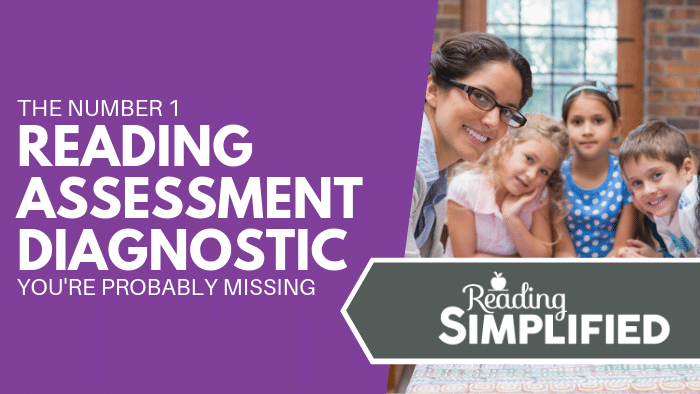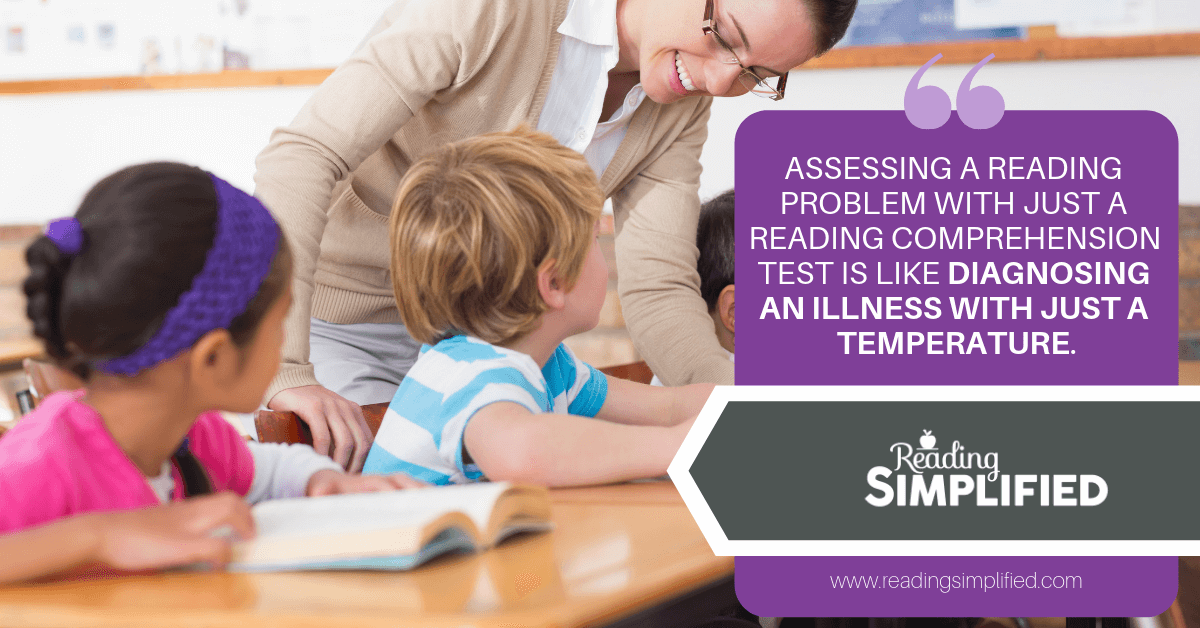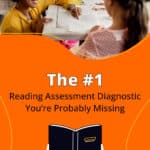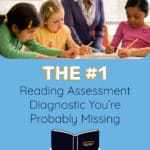
As teachers, we’re bombarded with tests. Sometimes, it can feel like that’s all we’re doing with our kiddos....the irony is that we’re not even giving our kids the most important reading test of all!
Most of the time, we’re diagnosing our kid’s reading level (or identifying reading problems) with comprehension-based assessments. While these tests are fine for assessing a child’s general ability to comprehend what she's read, they don’t reveal the true root of the problem.
In this article, I share the number one test that you need to give any struggling reader to find out the root of the problem. No more guesswork. No more tests that don’t recognize the underlying issue. Just one simple test that will zero in on the solution, so you know what your student is likely missing and what to do to streamline his reading achievement.
{To watch the video where I discuss the #1 reading assessment diagnostic test in more detail with a real-life case study, hit play below, or read on for a detailed overview.}
The Problem with Comprehension Tests
Although comprehension tests vary in the skills they assess, their main purpose is to determine whether or not a child’s comprehension skills are on grade level or not. If children don’t reach a certain percentile, we assume they have a comprehension problem.
DO they have poor comprehension skills?
Or, is there something else going on?
If they score below grade level, we don’t know the source of the problem. They could have a fluency problem, a lack of background knowledge, trouble with word identification, and so on.
Think about it this way…

Can a doctor diagnose an illness just by knowing a patient's temperature? No! The patient might have an ear-infection. Mononucleosis. Strep throat. The flu....
Similarly, we can't diagnose the source of a reader's problem with just a reading comprehension test.
Instead, you need to use a test that will help identify the root cause of the problem. When kids are behind the rest of the class in reading, 99% of the time it’s because they have poor sound-based decoding. As a result, this weak foundation in sound-based decoding will yield issues with word identification accuracy, fluency and, of course, comprehension.
So, how can you find out if sound-based decoding is the main problem?
The answer is with a nonsense word test!
Yes, they’re not real words. BUT they can reveal a lot about your kiddo’s level of phonetic knowledge and can help deduce how strong or poor her sound-based decoding is.
Why Do Nonsense Word Tests Work?
Again, reading comprehension tests can flag a problem. But alone, they’re almost meaningless in identifying the problem's source....
When we are asked to read nonsense words, however, we have to rely on our sound-based decoding skills and knowledge of the alphabetic principle to decode the words. We can’t rely on our visual memory to read a nonsense word. Instead, we need to tap into our ability to phonologically decode.
As a result, nonsense words give teachers a clearer insight into a child’s underlying decoding ability. If he struggles with nonsense words, you know that he has a decoding problem!
Indeed, probably the most cited reading researcher of all time, Keith Stanovich, notes in his book, Progress in Understanding Reading, "the incredible potency of pseudoword [aka nonsense word] reading as a predictor of reading difficulty."
I highly suggest that teachers consider giving a standardized nonsense word test (such as found in the Woodcock-Johnson Reading Mastery Test or the Wechsler Individual Achievement Test) as a screener for students who are not doing well in reading. This measure often takes less than 5 minutes.
Once you know that a student has a sound-based decoding problem, then you know what needs remediation! Don't beat your head against the wall with reading comprehension strategies or fluency drills when the first, most pressing, issue is poor sound-based decoding.
Decoding is the foundation upon which all other reading skills build upon, so it's important to shore up that base. Reading comprehension may fall right into place after this intervention! Or, other higher level skills may need to be addressed later on. But keep the horse in front of the cart by solving first the foundational decoding problem.
The good news is that it doesn't take forever to resolve a sound-based decoding weakness. On average, I see struggling students accelerate to above grade level in this skill (and others) with just of 12 hours of 1-on-1 Reading Simplified instruction.
(You may interested in a complementary workshop, 3 Activities a Day to Keep Reading Difficulties Away, that teaches the core of our instruction. Just head here to save a seat in an upcoming session.)

Grab FREE Nonsense Word Reading Tests
You can find out more about Reading Tests that Inform Instruction here. If you don’t have access to expensive norm-referenced tests, don’t worry!
I’ve included links to a few FREE options below:
- paper-based, norm-referenced ‘The Nonword Decoding Test’ from Dyslexia International
- online-based, norm-referenced nonword and real word test Lexercise.com (most appropriate for readers under 4th-5th grade)
Could you benefit from a FREE informal reading assessment of phonics, nonword decoding, and phonemic segmentation? All you have to do to snag your free copy is leave your name and email address below, and it’ll be delivered straight to your inbox!
Have you tried using nonsense word tests with your students to identify the root of the problem? Let me know in the comments or leave any questions you have below, and I’ll get back to each one!





Snagging my free copy.
Great! Keep an eye on your email!